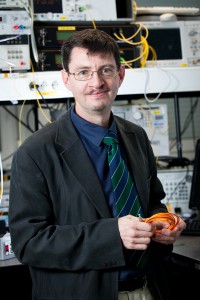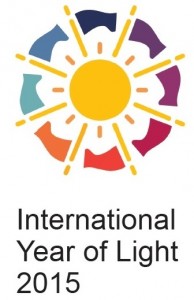John Dudley on urban lighting in International Year of Light 2015
John Dudley, Head of the Optoelectronics and Photonics research section of the CNRS research institute FEMTO-ST (France) and Chairman of the IYL 2015 Steering Committee, answers a few questions on the role of urban lighting in the International Year of Light for the LUCI “Cities & Lighting” magazine…
The main stated aim is to raise awareness at all levels of how light and light science impacts on the quality of life and the future development of citizens and society, and to ensure that our knowledge of this feeds into policy decisions to improve quality of life for all. This sounds overly ambitious perhaps, but this is precisely what the mandate of the UN General Assembly allows us to aim for.
What is the place of urban lighting in the International Year of Light?
I think it is important to distinguish between “urban lighting” as we understand it in rich, developed countries, and the notion of having “access to lighting” in villages and towns in developing countries. Of course, in all cases, both aim to provide “light to people” but the challenges and solutions in local environments are very different depending on where you live!
When we talk about urban lighting in developed countries, the aim of IYL is to raise awareness of the need to use the right technology to provide the right kind of light, in the right place and time, at the lowest possible cost and with the best energy efficiency. It seems that virtually every month now, new innovations are being reported, both in academia and industry, in the technology of the particular light sources being developed, as well as the use of smart systems to control light usage. We all want the safety, security and improved quality of life that lighting provides, but at the same time it is clear that light pollution is making us forget our place in the universe, and perhaps as a consequence, making us lose perspective on the need to take care of our planet.
How does the IYL position itself with regards to lighting in developing countries?
In developing countries the situation is somewhat different. Over one-quarter of the world’s population lives without access to electricity and so here one emphasis is on the provision of off-grid lighting.
But while it is very simple to provide a solar cell powered LED source, ensuring that this approach scales with the need in an economically sustainable way seems to be much more difficult. What IYL is doing, however, is bringing together the different partners (NGOS, industry, local communities) in a way which I hope will lead to dialogue and long-term commitment to solve this problem going well beyond 2015. The theme of “light poverty” is one we need to bring to the attention of all, as light provides education and opportunity.
What is your message to decision-makers in cities around the world?
I believe an important message is that responsible and wise application of light in the built environment of our cities is “win-win” for both the public and (local and national) politicians. For example, reducing light pollution through innovative design and smart systems also saves energy and cost, and provided these advantages are passed onto the public, then this will help the public to see first-hand the benefits of science and technology in a wider sense.
The International Year of Light and Light-Based Technologies (IYL 2015) is a global initiative adopted by the United Nations (A/RES/68/221) to raise awareness of how optical technologies promote sustainable development and provide solutions to worldwide challenges in energy, education, agriculture, communications and health. LUCI is a silver associate of IYL 2015. www.light2015.org
Image frontpage (c) UNESCO/Nora Houguenade



